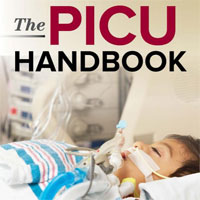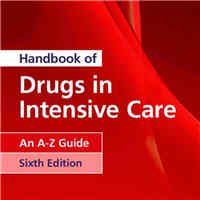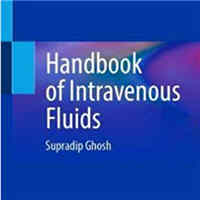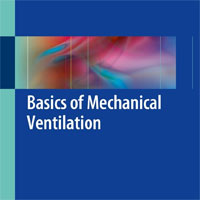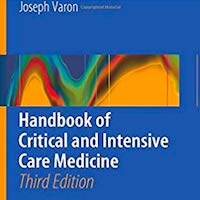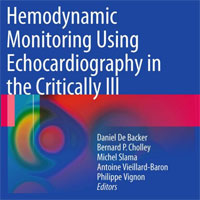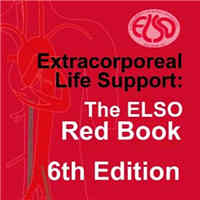Tag: AKI
AKI Risk Factors in ICU Patients Using Colistin
Colistin, an antibiotic of polymyxin group, has recently been increasingly used in the treatment of multidrug resistant gram-negative bacteria. However, it has serious adverse effects such as acute kidney injury (AKI). We... read more
Ilofotase Alfa Doesn’t Improved Survival Among Critically Ill Patients with SA-AKI
Sepsis-associated acute kidney injury (SA-AKI) in patients admitted to an intensive care unit is associated with significant morbidity and mortality. There is currently no pharmaceutical treatment. Although we found no... read more
A Global Perspective on AKI After Major Surgery
Acute kidney injury (AKI) is an abrupt decline in kidney function occurring within hours or days. In patients having surgery, postoperative AKI is a major complication associated with adverse outcomes including mortality.... read more
Initiation of CRRT vs. Intermittent Hemodialysis in Critically Ill Patients with Severe AKI
In critically ill patients with severe acute kidney injury (AKI), initiation of continuous renal replacement therapy (CRRT), as compared to intermittent hemodialysis (IHD), was associated with a significant reduction in the... read more
Optimal RRT for Critically Ill Patients with Severe AKI
In critically ill patients with severe acute kidney injury (AKI), initiation of continuous renal replacement therapy (CRRT), as compared to intermittent hemodialysis (IHD), was associated with a significant reduction in the... read more
Urine Output-based Sepsis-associated AKI: Clinical Implications
This paper offers comprehensive insights into the epidemiology of acute kidney injury (AKI), and we commend the authors for their significant contribution. They revealed an increase in the number of mild cases among AKI stage... read more
Epidemiology of Surgery Associated Acute Kidney Injury (EPIS-AKI)
In a comprehensive multinational study, approximately one in five patients develop PO-AKI after major surgery. Increasing severity of PO-AKI is associated with a progressive increase in adverse outcomes. Our findings indicate... read more
AKI Defined by Fluid-Corrected Creatinine in Premature Neonates
In this secondary analysis of the multicenter PENUT trial, we describe fluid-corrected acute kidney injury (AKI) and evaluate associations with short-term and long-term outcomes in premature neonates with fluid-corrected... read more
Blood Purification for Adult Patients with Sepsis
Our network meta-analysis (NMA) suggests that plasma exchange and polymyxin-B hemoperfusion may provide potential benefits for adult patients with severe infection or sepsis/septic shock when compared with standard care alone,... read more
Doppler Ultrasound Identified Venous Congestion in Septic Shock
Venous congestion is a pathophysiological state where high venous pressures cause organ edema and dysfunction. Venous congestion is associated with worse outcomes, particularly acute kidney injury (AKI), for critically ill... read more
The impact of diabetes mellitus on morbidity and mortality in patients with COVID-19
During the COVID-19 pandemic, healthcare delivery was affected in various ways. For example, acute and chronic cardiovascular diseases (CVDs) and events were less frequently observed in hospitals, both because public health... read more
Updated Systematic Review on Remdesivir’s Safety and Efficacy in COVID-19 Patients
Remdesivir, an antiviral medication, may benefit patients who are infected with mild or moderate forms of COVID-19 infection. Several research findings have suggested the safety and efficacy of remdesivir for a five- to 10-day... read more
Acute Kidney Injury in ICU Patients
Patients admitted to the intensive care unit are prone to various complications, one of which is acute kidney injury (AKI). The etiology of acute kidney injury can be multifactorial. Among the various causes, sepsis remains... read more
CEUS Value in Diagnosis of AKI in ICU patients
Ultrasound can assess renal perfusion, but its role in the evaluation of acute kidney injury (AKI) is still unclear. This prospective cohort study was to investigate the value of contrast-enhanced ultrasound (CEUS) in the... read more
Higher Protein Dosing in Critically Ill Patients with High Nutritional Risk
Delivery of higher doses of protein to mechanically ventilated critically ill patients did not improve the time-to-discharge-alive from hospital and might have worsened outcomes for patients with acute kidney injury (AKI)... read more
Bayesian Reanalysis of the Standard vs. Accelerated Initiation of RRT in AKI Trial
Timing of initiation of kidney-replacement therapy (KRT) in critically ill patients remains controversial. The Standard versus Accelerated Initiation of Renal-Replacement Therapy (RRT) in Acute Kidney Injury (STARRT-AKI)... read more
Acid-Base Disorders in the Critically III Patient
Acid-base disorders are common in the intensive care unit. By utilizing a systematic approach to their diagnosis, it is easy to identify both simple and mixed disturbances. These disorders are divided into four major categories:... read more
Association of Vancomycin Plus Piperacillin-tazobactam with Early Changes in Creatinine vs. Cystatin C
Although dozens of studies have associated vancomycin + piperacillin–tazobactam with increased acute kidney injury (AKI) risk, it is unclear whether the association represents true injury or a pseudotoxicity characterized... read more
Subphenotypes of AKI in Adults
Subphenotyping may help reduce heterogeneity under the umbrella term of acute kidney injury (AKI). Despite challenges remain, the identification of AKI subphenotypes has opened the potential of AKI research focused on better... read more
Is Continuous Intra-abdominal Pressure Ready For Prime Time?
Abdominal contents are primarily fluid in character so that pressure within this compartment follows Pascal's hydrostatic law. Intra-abdominal pressure (IAP) is the steady state pressure within the abdominal cavity and changes... read more
Sepsis-Associated AKI Risks in the PICU
In children with severe sepsis, the degree of hemodynamic support as measured by the VIS and the presence of fluid overload may identify patients at increased risk of developing severe acute kidney injury (AKI). Children... read more
Optimizing the Design and Analysis of Future AKI Trials
Acute kidney injury (AKI) is a complex clinical syndrome associated with an increased risk of morbidity and mortality, particularly in critically ill and perioperative patient populations. Most AKI clinical trials have... read more


